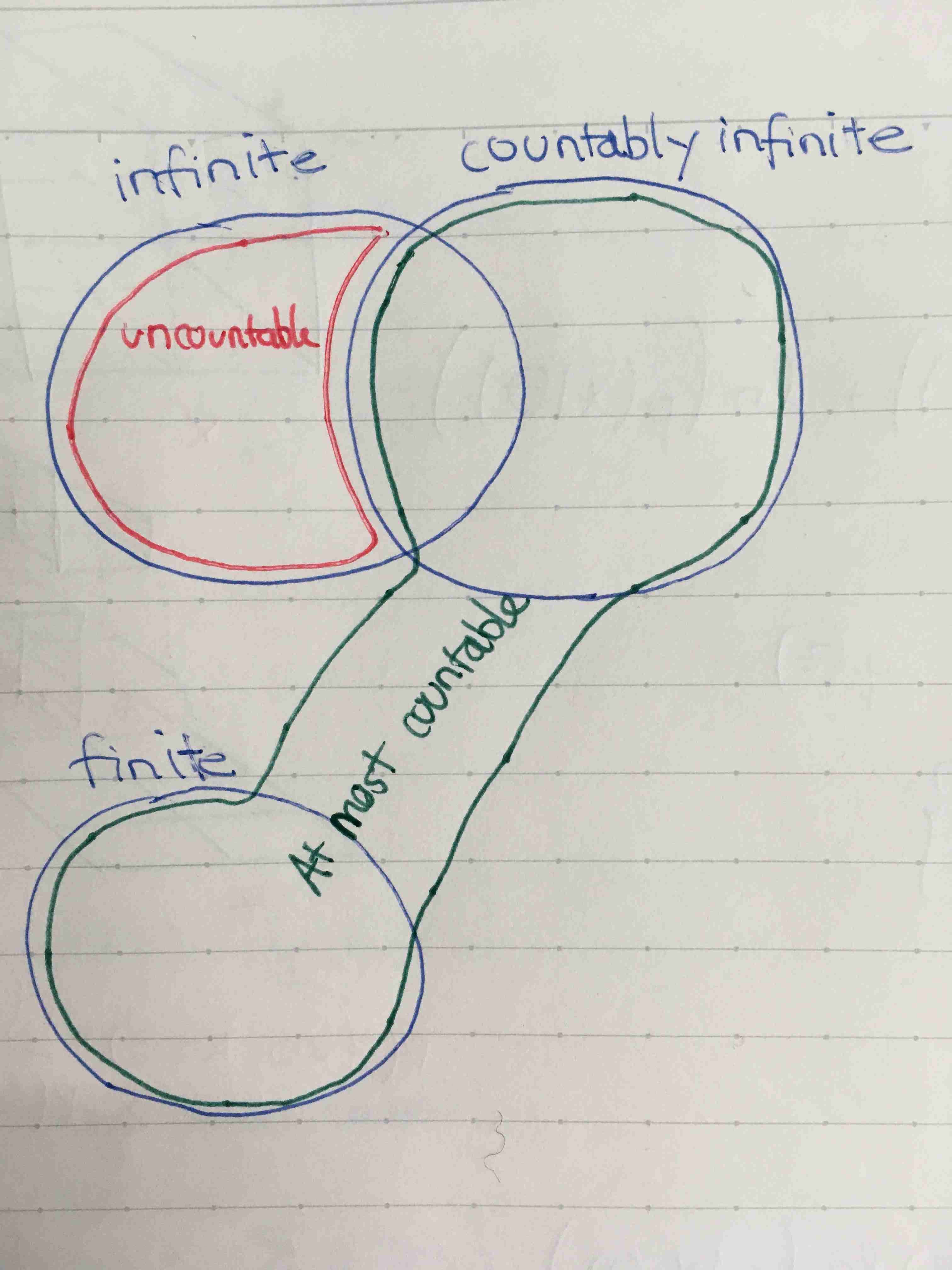Countable sets
A set \( X \) is said to be countably infinite (or just countable) iff it has equal cardinality with with the natural numbers \( \mathbb{N} \).
We also have the terms: at most countable and uncountable.
- A set is at most countable if it is either finite or coutable.
- A set is uncountable if it is infinite and not countable.

Countably infinite sets are also called denumerable sets.
Note that a countable set must be infinite as it has the same cardinality as \( \mathbb{N} \).
Know your bijection
To understand the nature of countable sets, it is crucial to understand the nature of the bijection and how it operates on the infinite set \( \mathbb{N} \). Recap below:
One-to-one functions
A function \( f \) is one-to-one (or injective) if different elements map to different elements:
Onto functions
A function \( f \), \( f : X \rightarrow Y \) is onto (or surjective) if every element in \( Y \) can be obtained from applying \( f \) to some element in \( X \):
Bijective functions
A function which is both injective and surjective is called bijective or invertable.
Example
We know that if \( X \) is finite and \( Y \) is a propper subset of \( X \), then \( Y \) does not have the same cardinality as \( X \). This does not apply to infinite sets. For example, \( \mathbb{N} \) has the same cardinality as \( \mathbb{N} - \{0\} \), and thus, the latter is countable. This is so as we can have a bijection \( f: \mathbb{N} \rightarrow \mathbb{N} - \{x\} \) from \( \mathbb{N} \) to \( \mathbb{N} - \{x\} \). (why? Look at the bijective definition above)
The set of even natural numbers, \( \{2n : n \in \mathbb{N} \} \), is also countable.
